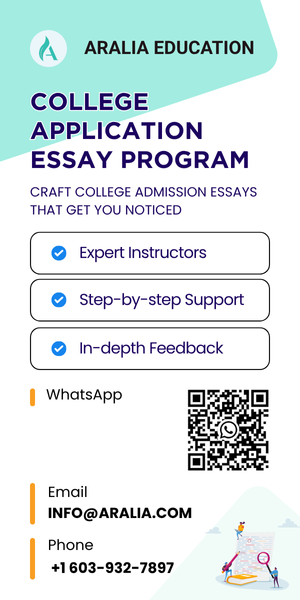Many students find learning a traditional language challenging because it often relies on memorization and repetitive drills. Without context or immediate feedback, it can feel disconnected from real-life communication. Most struggle to remember vocabulary, apply grammar rules correctly, or gain confidence speaking in real situations.
85% of Aralia Students Place in Top Writing Competitions
If you’re thinking about exploring a new language, you should definitely invest your time! It opens doors to accessing new knowledge and opportunities, helps you connect with more people, and even boosts your brainpower. And with AI tools, you can supplement your practices through immersing yourself in practical conversations or situations anytime, anywhere. In Part IV of our AI Toolkit for Students series, let’s discuss some of the best techniques and methods you can use with AI to help facilitate your learning journey with confidence.
1. Creating immersive scenarios
AI can simulate conversations that would happen in places like restaurants, airports, or classrooms, as well as in situations like job interviews. This allows students to practice speaking in a controlled environment, make mistakes without embarrassment, and slowly build confidence in using the language naturally. By placing words and phrases in context, AI helps learners understand how a specific language works in different scenarios.
A study published in ScienceDirect highlights the effectiveness of AI chatbots in enhancing students’ English-speaking skills, confidence, and engagement. The research found that AI-powered tools offer personalized learning experiences, allowing students to practice conversations in realistic contexts and receive comprehensive feedback on their proficiency.
2. Providing instant, tailored feedback
Unlike traditional exercises wherein assessments may be generic or may take a while before they’re returned to students, AI can give immediate, personalized guidance. It can also highlight grammar errors, suggest better word choices, and offer pronunciation tips based on your current skill level. This helps you learn from mistakes as they happen and reinforces correct patterns early on.
A paper from ResearchGate explores how AI-powered tools in English language learning, such as automated essay scoring and speech recognition, offer objective, detailed, and consistent feedback. These tools adapt to individual learners’ needs, making corrections more effective and facilitating personalized learning experiences.
3. Encouraging reflection
With the right application, AI doesn’t just provide answers. Many tools are designed to let students reflect on their learning progress by asking follow-up questions such as, “Why did you choose that word?” or “How else could you say this?” These prompts allow them to understand different language choices.
A research by Kohnke et al. looks into the role of Generative AI in providing personalized guidance during language learning tasks. The study emphasizes that AI can simulate real-world scenarios, allowing students to practice speaking in a comfortable environment and receive personalized assessments, both of which are crucial for building proficiency and confidence.
Strategies to Learn a New Language with AI
1. Reverse Translation Challenge
Instead of translating something from your native language directly to the target language, try doing it in reverse: come up with a translation of something already in the target language and then convert it back into your own language. Afterwards, you can compare the results with AI. This strengthens comprehension and contextual understanding.
Check out these platforms and tools: Google Translate, LingQ, DeepL Translator
2. AI-Powered Journaling
Keep a daily journal in your target language. Use AI to review it for grammar and style, then rewrite your entries based on the feedback. Over time, this builds fluency while keeping the writing personal.
Check out these platforms and tools: Grammarly, QuillBot, ChatGPT
3. Storytelling and Roleplay
Ask AI to create short scenarios or dialogues with gaps, then fill in your responses. For example: “You are ordering coffee in Madrid. Respond naturally.” This develops conversational thinking rather than relying solely on memorization.
Check out these platforms and tools: Google Gemini, Replika, FluentU
4. Explore Multiple Perspectives
Use AI to read news, articles, or social media posts in your target language. Then ask it to summarize in different styles: casual, academic, or persuasive. Compare summaries to understand nuance and tone of each piece of media.
5. Gamify Your Learning
Turn repetition into play. Ask AI to generate quizzes, flashcards, or mini-games using your vocabulary list. Track your progress and gradually increase the difficulty levels as you go.
Check out these platforms and tools: Duolingo, Anki, Babbel, Memrise, Quizlet, Kahoot!
To help you put these strategies into practice, here’s a sample 7-day routine that integrates AI-powered exercises into different aspects of language learning. Each day focuses on a specific skill, from vocabulary and grammar to speaking, listening, writing, and cultural understanding.
By following this routine, you can build a balanced, immersive, and holistic practice that gradually strengthens your fluency while keeping the learning experience engaging and practical.
Sample 7-Day AI Language Boost Routine
Day | Focus | AI-Powered Activity |
1 | Vocabulary | Ask AI to generate 20 new words with example sentences. |
2 | Grammar | Write a short paragraph and use AI to check for any mistakes and explain them. |
3 | Speaking | Roleplay a simple conversation with an AI chatbot. |
4 | Listening | Ask AI to generate news clips in your target language. Summarize the text in your own language. |
5 | Writing | Write a story using new vocabulary; get feedback from AI to see if you used the words correctly. |
6 | Culture | Ask AI to explain idioms, slang, and expressions. |
7 | Review | Test yourself with AI-generated exercises. |
AI can help you learn a new language, but only if you use it proactively. Explore new words, try out sentences, and practice conversations, while also seeking feedback and reflecting on your progress. When you combine AI with effort and curiosity, it becomes more than a tool. It can serve as a partner that helps you build real skills, confidence, and the ability to communicate in the world.

Responsible Use of AI in Academic and English Writing
This Responsible Use of AI in Academic and English Writing course is designed to teach students how to integrate artificial intelligence (AI) tools into their academic and English writing processes responsibly, effectively, and ethically.









